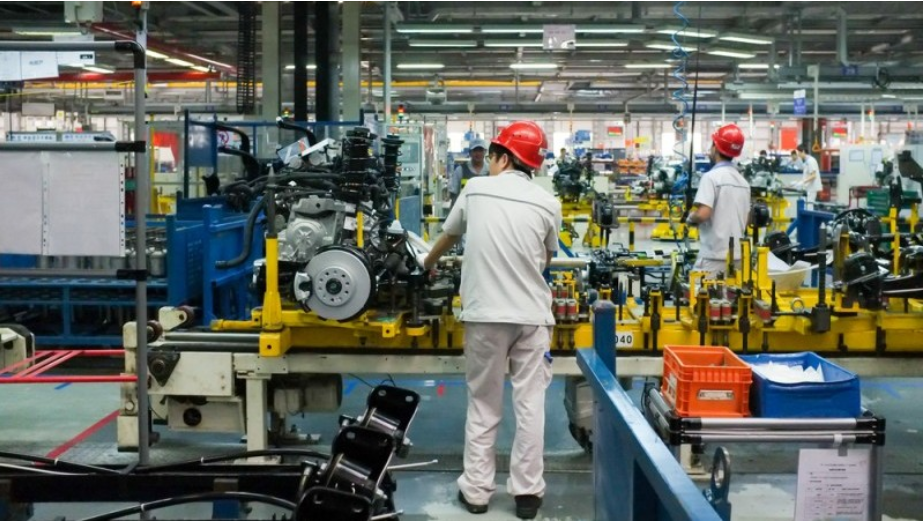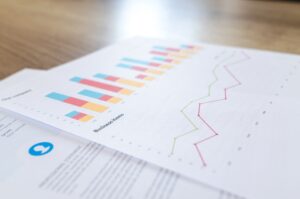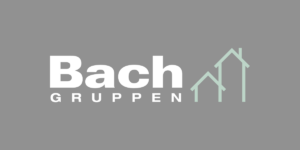En analyse fra ABN Amro viser, at den kinesiske økonomi viser voldsom fremgang. Bilproduktionen er helt tilbage på niveau fra før coronakrisen, og industriproduktionen er tæt på det gamle niveau. Selv i Hubei-provinsen, hvor virussen begyndte, er produktionen kommet tilbage med en positiv vækst. Forbruget halter dog efter industriproduktionens fremgang. ABN Amro tror ikke, at det seneste udbrud i Beijing ændrer ved situationen – foreløbig.
Uddrag fra ABN Amro:
China Watch – Vroomm, vrooommm
- Impressive comeback car sector shapes post covid-19 industrial rebound
- … illustrating the unwinding of emergency measures as the country reopened
- Even epicenter Hubei back at positive annual industrial production growth
- Domestic demand is also recovering gradually helped by policy stimulus, …
- … with social distancing sensitive sectors (catering, transport) still lagging
200618-China-Watch-Vroomm-vrooommm.pdf (315 KB)
Impressive comeback car sector drives post covid-19 industrial rebound …
China’s activity data for May published in the course of this month show that the industry-led recovery from the covid-19 shock earlier this year continues. Car production is improving at an impressive pace, showing positive annual growth of +11.3% yoy in May, versus -4.4% in April and a trough of -83% (!) in February.
Car sales is also back to growth territory: +7.2% yoy in May, versus -2.5% in April (and -82% in February). The recovery in the car sector is supported by targeted government measures, but likely also stems from the fact that consumers are still cautious taking public transport and prefer using their own transport instead.
Meanwhile, overall industrial production growth rose to +4.4% yoy in May (April: +3.9%), but the trend seems to be flattening out a bit. That is in line with our expectation, as it reflects rising external headwinds from the sharp drop in global activity that caused Chinese exports to contract by 3.3% yoy in May.
This reflects China’s reopening, with even Hubei’s production back to annual growth
China’s solid industrial recovery from the covid-19 shock reflects the fact that the country has got the pandemic under control relatively quickly, although also China is not immune for new outbreaks (see below). That has paved the way for a gradual reopening of the economy since late February.
Illustrative for the recovery, perhaps, is that even China’s covid-19 epicenter, Hubei province with capital Wuhan, has turned back to positive annual industrial growth in May (+2% yoy), versus -47% in May.
In terms of covid-19 related safety measures, Hubei – accounting for around 4.5% of GDP and 10% of national car production – was the region that stayed the longest at the highest emergency level 1 (until mid-April, together with a.o. Beijing). Since then, the emergency level for Hubei has been eased to 2 in May and to 3 in June (4 is the most relaxed regime).
That is illustrative for a broader easing pattern within China. We have calculated an index that captures the development of the regional emergency levels over the past months. That index shows a clear relaxation since early March, although with a modest tightening after Beijing’s reclassification.
Gradual recovery of domestic demand, with ‘social distancing sensitive’ sectors lagging
China’s rebound is led by the production side, with domestic demand lagging somewhat. However, domestic demand is also showing signs of a further recovery, partly helped by a stepping up of fiscal and monetary easing and a pick-up in credit growth.
The annual, cumulative contraction of fixed investment is getting shallower by the month (May: -6.3% yoy ytd, versus -10.3% in April). We should that is entirely due to a pick-up of public investment, reflecting the stepping up of infrastructure spending by the central and local governments, while private investment is still weak.
On the consumption side, retail sales are also recovering quickly, although remaining in negative territory as well (-2.8% yoy in May, versus -7.5% in April). Consumer-related, ‘social distancing sensitive’ sectors such as catering continue to lag, but are also regaining some ground (catering: -19% yoy in May versus -31% in May). Public transport has also regained some pace, but is still at only 50% of pre-corona levels.
New Covid-19 outbreak in Beijing no ‘game changer’ yet, but highlights risks
In response to a new Covid-19 outbreak related to one of its food markets, the Beijing area has been brought back to emergency level 2 (from 3, 1 is the highest). That means for instance the local closure of schools and a tightening of all kinds of mobility and other restrictions. So far, we do not expect this to be a major game changer for China’s economy. In numerical terms, this new outbreak is still relatively small.
Moreover, as they did at previous ‘second waves’ (for instance in the Northeast), the authorities have reacted swiftly and in a decisive and targeted manner. The authorities are now more experienced in dealing with this pandemic than they were back in January. Next to that, China still profits from the experience gained during previous epidemics (e.g. SARS in 2003), partly explaining the ‘community discipline’ seen across the country.
That said, the new Beijing outbreak may affect confidence to some extent again and could delay the recovery of domestic demand, in particular in the social distancing sensitive sectors. Moreover, it highlights a key downside risks to our base case. Should new outbreaks become ‘disorderly’ and result in a widespread reclassification of regions into stricter emergency regimes, that may change the picture of course.












